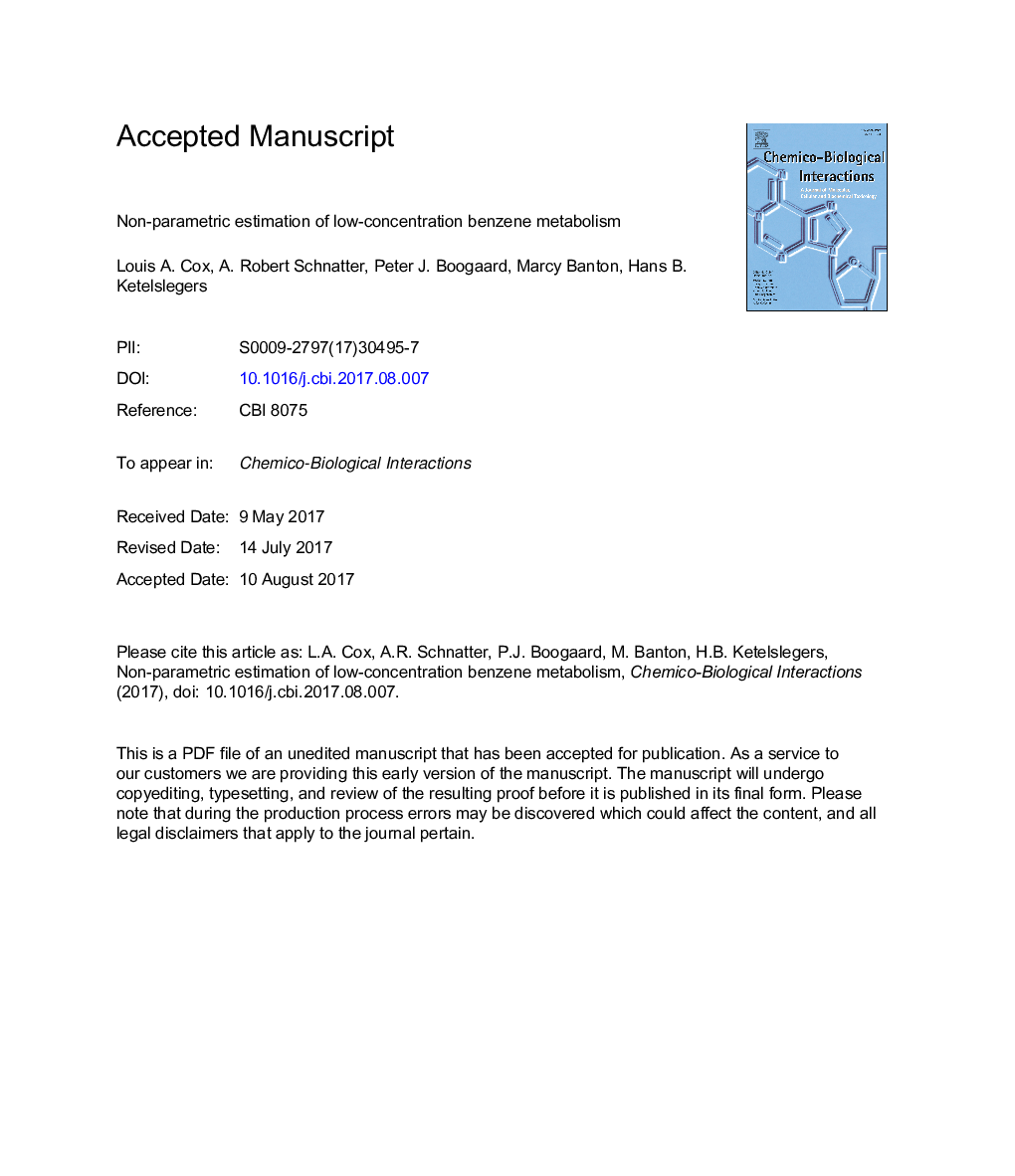| Article ID | Journal | Published Year | Pages | File Type |
|---|---|---|---|---|
| 8545451 | Chemico-Biological Interactions | 2017 | 56 Pages |
Abstract
Two apparently contradictory findings in the literature on low-dose human metabolism of benzene are as follows. First, metabolism is approximately linear at low concentrations, e.g., below 10Â ppm. This is consistent with decades of quantitative modeling of benzene pharmacokinetics and dose-dependent metabolism. Second, measured benzene exposure and metabolite concentrations for occupationally exposed benzene workers in Tianjin, China show that dose-specific metabolism (DSM) ratios of metabolite concentrations per ppm of benzene in air decrease steadily with benzene concentration, with the steepest decreases below 3Â ppm. This has been interpreted as indicating that metabolism at low concentrations of benzene is highly nonlinear. We reexamine the data using non-parametric methods. Our main conclusion is that both findings are correct; they are not contradictory. Low-concentration metabolism can be linear, with metabolite concentrations proportional to benzene concentrations in air, and yet DSM ratios can still decrease with benzene concentrations. This is because a ratio of random variables can be negatively correlated with its own denominator even if the mean of the numerator is proportional to the denominator. Interpreting DSM ratios that decrease with air benzene concentrations as evidence of nonlinear metabolism is therefore unwarranted when plots of metabolite concentrations against benzene ppm in air show approximately straight-line relationships between them, as in the Tianjin data. Thus, an apparent contradiction that has fueled heated discussions in the recent literature can be resolved by recognizing that highly nonlinear, decreasing DSM ratios are consistent with linear metabolism.
Keywords
Related Topics
Life Sciences
Environmental Science
Health, Toxicology and Mutagenesis
Authors
Louis A. (Tony), A. Robert Schnatter, Peter J. Boogaard, Marcy Banton, Hans B. Ketelslegers,
